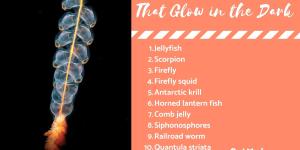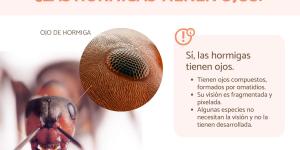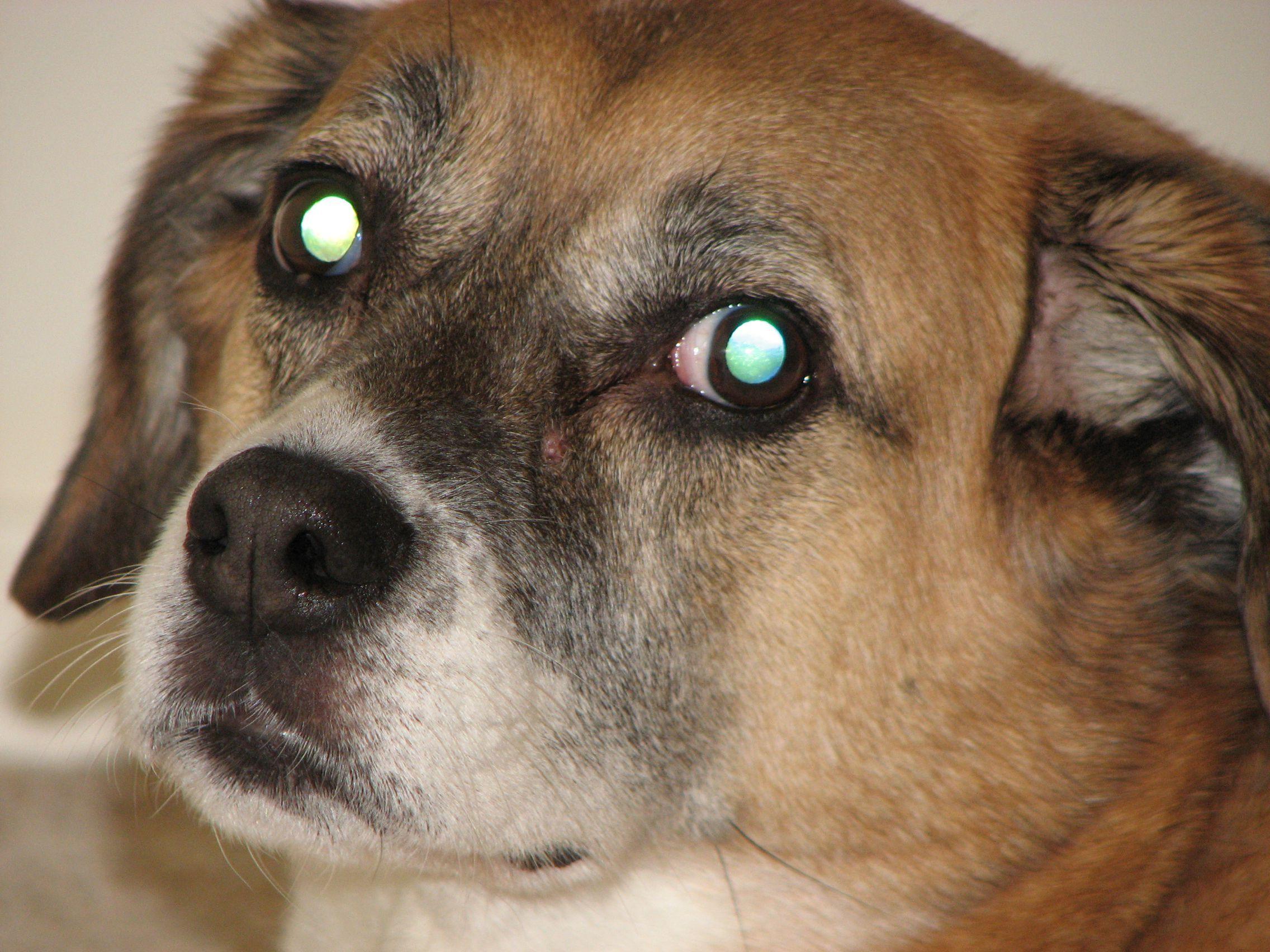Why Do My Dog's Eyes Glow in the Dark?



See files for Dogs
When in natural light, we can look into our dog's eyes and see the deep coloration. Although a dog's eyes can be a range of colors, they are all patterned delicately and do not have any natural bioluminescence. For this reason, it can be quite an eerie sensation to see our dog's eyes light up like some alien creature. This usually happens in low light, adding the strangeness and even making us wonder if dogs can see in the dark. We might not even see the dog's eyes glowing until we look at a photograph we have taken.
At AnimalWised, we ask why do my dog's eyes glow in the dark? We answer this question by looking at the anatomy of a dog's eye and understand how their vision works.
A dog's eyesight and vision
Dogs use various senses to navigate their world. They are particularly well known for their olfactory acuity, with a dog's sense of smell up to 100,000 times stronger than that of a human being. Although we may be aware that a dog can see, we may not know much about the acuity of a dog's vision.
The ability to see is a result of the interaction between the eye and the brain after the stimulus of light has been shone on the former. It is the same essential process for dogs, cats and many other mammals. Light enters the eyes through the cornea into the pupils, how much is allowed being controlled by the iris (i.e. the colored part of the eye). It is due to the iris we can see the dog's pupils enlarge and retract according to the amount of light.
For the dog's ability to see, the light travels through the pupil after being focused by the lens of the eye. Light rays pass through the vitreous part of the eye organ until they reach the retina. The retina receives the image and sends it via the optic nerve to the brain.
The retina is an inner ocular surface that consists of a type of organic screen. In it, we find numerous nerve endings that are sensitive to light and can be shaped like rods or cones. These endings are called photoreceptors and they detect the points of light that enter through the pupil and send them to the brain.
The interpretation of these sets of light information gives rise to the images we see. They act like a camera which records images through the lens to be actualized by the brain.
In human vision, about 90% of the light rays that enter through the pupil are wasted or lose intensity. Many of them are also not captured by the retinal photoreceptors, since they affect the blind space between the nerve endings. This explains why our night vision of humans is quite poor. This is likely due to a lack of evolutionary need since humans have been able to use fire and other sources of artificial light for millennia.
Dogs and cats have had a different evolutionary path. The domestication of dogs is only relatively recent with the most current evidence suggesting it first occurred 23,000 years ago[1]. Since these animals have not had the same adaptations as humans, they have had to develop their own. One such evolutionary trait is the development of a system to minimize the loss of light in their vision.
Behind a dog's photoreceptors is a surface called the ‘tapetum lucidum’. This is a piece of reflective tissue which is placed behind the retina of the eye and acts as a mirrored surface to send light back to the retina. For this reason, it is known as a type of retroreflector. It means less light is lost as additional light is reflected back into the retina to create a sharper image.
Unlike humans and primates, most mammals have a vertically elongated pupil. Dogs also have this type of pupil which means they blink vertically, almost like the opening and closing of curtains. This type of pupil orientation allows the entry of a greater amount of light, especially at night or in lowlight environments. It is for this reason you can see a dog's pupils constrict when we turn the lights on or dilate when there is less light.
Dogs have needed this adaptation so they could better survive in wild environments. Since they both needed to catch prey and avoid become the prey of larger predators, the tapetum lucidum allowed them to see better in the dark. This allowed them to spot potential prey for attack and spot potential predators for evasion.

Why do my dog's eyes glow in the dark?
The answer to this question is that they don't. Although it may appear as if they do, a dog's eyes do not glow in the dark. Certain animals that have the ability to glow in the dark do so thanks to a phenomenon known as bioluminescence. This is an ability of a living organism to produce its own light, something seen in fireflies, certain types of jellyfish and other species. It is thanks to a chemical reaction which results in the emission of light.
Dogs are not a type of bioluminescent animal. They cannot produce light on their own. While it may look like a dog's eyes glow in the dark, what is actually happening is the reflection of light from the tapetum lucidum. Such reflection creates a relatively weak light source, meaning we cannot see it in brightly lit spaces. However, when the environment is dimly lit, the reflection of light appears stronger in contrast, giving the appearance of a dog's eyes glowing in the dark.
This is the same explanation as to why dog eyes glow in photographs. When we take a photo of a dog with the flash on, the tapetum lucidum is often one of the most reflective surfaces in the resultant picture. This means the eyes reflect more light from the flash and appear much brighter. It can also happen in photos without a flash, depending on the light source.
Find out why a dog's ability to reflect light can weaken with our article on why dogs have cloudy eyes.

Why do a dog's eyes glow green?
Human beings do not have a tapetum lucidum, but they do have intraocular reflectance thanks to a structure known as the fundus. Its ability to reflect light is much weaker than that of the tapetum lucidum. When we have our picture taken we often see something known as the red-eye effect. It is the reflection of this structure which causes our eyes to look red in certain lights since it is red in color.
Generally speaking, dogs have green light reflection. This is not to do with the color of their iris, the tone we use to describe the dog's eye color. It is due to the cells which are most present on the tapetum lucidum. Thanks to the makeup of this tissue, there can be a slight variance in the color of a dog's eyes when they glow. This is due to the greater or lesser levels of compounds such as:
- Riboflavin: this is an amino acid which causes the dog's eyes to have a more red tint, often making the eyes appear more yellow when light is reflected off them.
- Zinc cysteine: this is a metal-derived amino acid present in the cells that pigment the surface of the tapetum lucidum which cause more green colorations to occur.
The animal's age and coat color also influence how its eyes reflect outside light. Older dogs suffer from a reduction in the reflection potential of their eyes, as their eye lenses thicken over time. This also explains why his vision becomes poorer with the passing of the years. Diseases and other health conditions can result in a dog's eye changing color, as well as affect their ability to reflect light.
Image: www.reddit.com

If you want to read similar articles to Why Do My Dog's Eyes Glow in the Dark?, we recommend you visit our Facts about the animal kingdom category.
1. Perri, A. R., Feuerborn, T. R., Frantz, L. A. F., Larson, G., Malhi, R. S., Meltzer, D. J., & Witt, K. E. (2021). Dog domestication and the dual dispersal of people and dogs into the Americas. Proceedings of the National Academy of Sciences of the United States of America, 118(6), e2010083118.
https://doi.org/10.1073/pnas.2010083118







